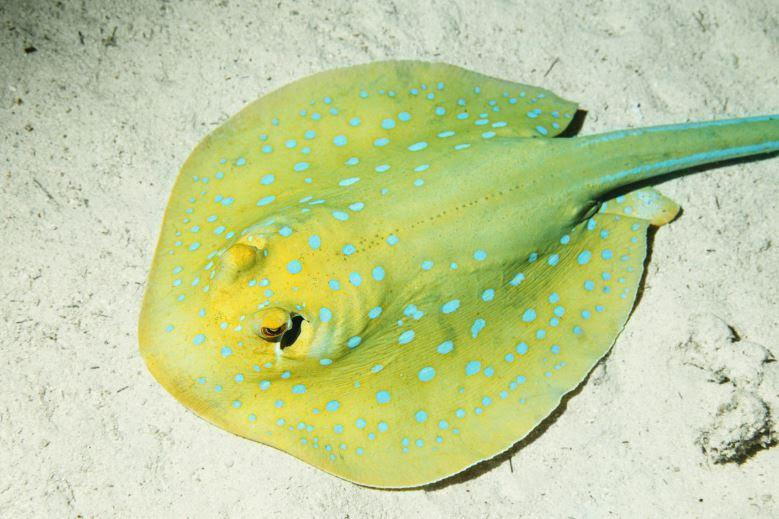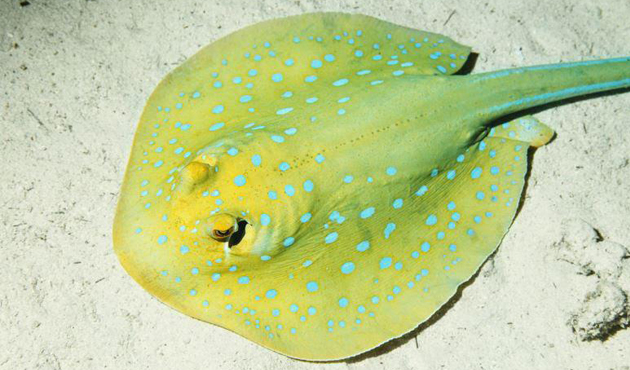Stingray Injury Updates

- posted: May 01, 2019

Stingray Season
Summer is upon us. Saltwater stingray injuries typically involve the lower legs, ankles, or feet after stepping on the animal.
Injury Clinical Presentation
The barb releases venom. The venom contains phosphodiesterase, serotonin, and 5’-nucleotidase. It causes severe pain, vasoconstriction, ischemia, and poor wound healing.
It can cause systemic effects including disorientation, seizures, nausea, vomiting, abdominal pain, diarrhea, muscle cramps and twitching, itching, hypotension (low blood pressure), cardiac arrythmias, paralysis, and even death.
What to do?
Pain Relief- The venom can be inactivated with hot but not scalding water. Thus, you should immerse the wound in hot water immediately until the pain subsides. Other treatments to help with pain include ibuprofen pills and ice packs.
Infection- One major complication of string ray injuries is infection. Many bacteria live in stingray mucus, the ocean, and on human skin that can contaminate the wound. Marine bacteria like Vibrio, Aeromonas and Mycobacterium species are resistant to antibiotic pills used to treat Staphylococcus and Streptococcus species of bacteria. Also, people should be up to date on their vaccinations because severe cases of tetanus following stingray injuries have been reported because Clostridium species can contaminate the wound.
Should you take antibiotic pills?
Most experts support taking antibiotics pills to prevent infection in all but mild stingray injuries. Deeper lacerations and puncture wounds require antibiotic pills. Several authors agree on the use of ciprofloxacin or trimethoprim-sulfamethoxazole treatment. Failure of improvement after antibiotic pills requires intravenous antibiotic treatment.
Foreign Bodies- Stingray injuries often involve retained barbs. All wounds should be explored for material under local anesthesia. Routine imaging with X-rays is not helpful.
Avoidance and Prevention
An ounce of prevention is worth a pound of treatment. Stingray injuries can be avoided by wading through water with a shuffling gait. This warns the stingray that something is close and often scares them away. Polarized sunglasses may help spot stingrays in shallow water.
Author

Dr. Alexis Dougherty, MD Board Certified Dermatologist Mother Wife Beach volleyball player Runner From Texas Owner & Director of Kind Dermatology & Medical Spa

- posted: May 01, 2019

Stingray Season
Summer is upon us. Saltwater stingray injuries typically involve the lower legs, ankles, or feet after stepping on the animal.
Injury Clinical Presentation
The barb releases venom. The venom contains phosphodiesterase, serotonin, and 5’-nucleotidase. It causes severe pain, vasoconstriction, ischemia, and poor wound healing.
It can cause systemic effects including disorientation, seizures, nausea, vomiting, abdominal pain, diarrhea, muscle cramps and twitching, itching, hypotension (low blood pressure), cardiac arrythmias, paralysis, and even death.
What to do?
Pain Relief- The venom can be inactivated with hot but not scalding water. Thus, you should immerse the wound in hot water immediately until the pain subsides. Other treatments to help with pain include ibuprofen pills and ice packs.
Infection- One major complication of string ray injuries is infection. Many bacteria live in stingray mucus, the ocean, and on human skin that can contaminate the wound. Marine bacteria like Vibrio, Aeromonas and Mycobacterium species are resistant to antibiotic pills used to treat Staphylococcus and Streptococcus species of bacteria. Also, people should be up to date on their vaccinations because severe cases of tetanus following stingray injuries have been reported because Clostridium species can contaminate the wound.
Should you take antibiotic pills?
Most experts support taking antibiotics pills to prevent infection in all but mild stingray injuries. Deeper lacerations and puncture wounds require antibiotic pills. Several authors agree on the use of ciprofloxacin or trimethoprim-sulfamethoxazole treatment. Failure of improvement after antibiotic pills requires intravenous antibiotic treatment.
Foreign Bodies- Stingray injuries often involve retained barbs. All wounds should be explored for material under local anesthesia. Routine imaging with X-rays is not helpful.
Avoidance and Prevention
An ounce of prevention is worth a pound of treatment. Stingray injuries can be avoided by wading through water with a shuffling gait. This warns the stingray that something is close and often scares them away. Polarized sunglasses may help spot stingrays in shallow water.
Author

Dr. Alexis Dougherty, MD Board Certified Dermatologist Mother Wife Beach volleyball player Runner From Texas Owner & Director of Kind Dermatology & Medical Spa
Monday
8:30 am - 5:00 PM
Tuesday
8:30 am - 5:00 PM
Wednesday
8:30 am - 5:00 PM
Thursday
8:30 am - 5:00 PM
Friday
8:30 am - 5:00 PM
Saturday
Closed
Sunday
Closed
Visit our Office
601 East Arrellaga St Suite 101
Santa Barbara, CA 93103
